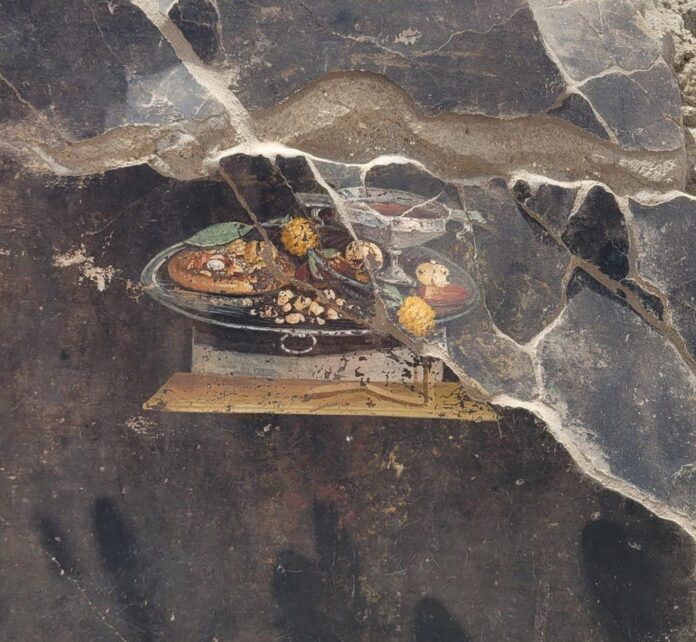A still-life painting of flatbread adorned with toppings has been discovered on the atrium of an ancient Pompeiian house. It looks a lot like a pizza, experts have pointed out, but it can’t be, because tomatoes and mozzarella cheese hadn’t come on the scene yet.
In the painting, a goblet of win sits on a silver tray, along with what appears to be a focaccia garnished with various fruits (archaeologists have identified a pomegranate and perhaps a date). The bread is seasoned with spices or maybe pesto, while nearby are dried fruit, yellow strawberry trees, dates and pomegranates.
Pompeii sits just outside of Naples, which was named a World Heritage Site in 2017 in recognition of the “traditional art of the Neapolitan pizza maker.”
The ancient city was destroyed and covered in ash by the 79 A.D. eruption of the nearby volcano Vesuvius, its structures and deceased residents preserved in remarkable detail. Excavations began in 1748. The house with the still life was partly excavated in 1888 and 1891; work resumed there in January.
“Pompeii never ceases to amaze,” said culture minister Gennaro Sangiuliano in a statement announcing the find. “It is a casket that always reveals new treasures.”

Courtesy Pompeii Archaeological Park.
Such images, known as xenia in ancient times, referred to gifts reflecting hospitality that were, by Greek tradition dating back to the Hellenistic period, offered to household guests. Vesuvian cities have yielded a few hundred such representations.
“In addition to the precise identification of the foods represented, we find in this fresco some themes of the Hellenistic tradition, later elaborated by authors of the Roman imperial era such as Virgil, Martial and Philostratus,” said the director of the Archaeological Park of Pompeii, Gabriel Zuchtriegel, in a statement.
“I am thinking of the contrast between a frugal and simple meal, which refers to a sphere between the bucolic and the sacred, on the one hand, and the luxury of silver trays and the refinement of artistic and literary representations on the other,” he continued. “How can we fail to think, in this regard, of pizza, also born as a ‘poor’ dish in southern Italy, which has now conquered the world and is also served in starred restaurants.”

























